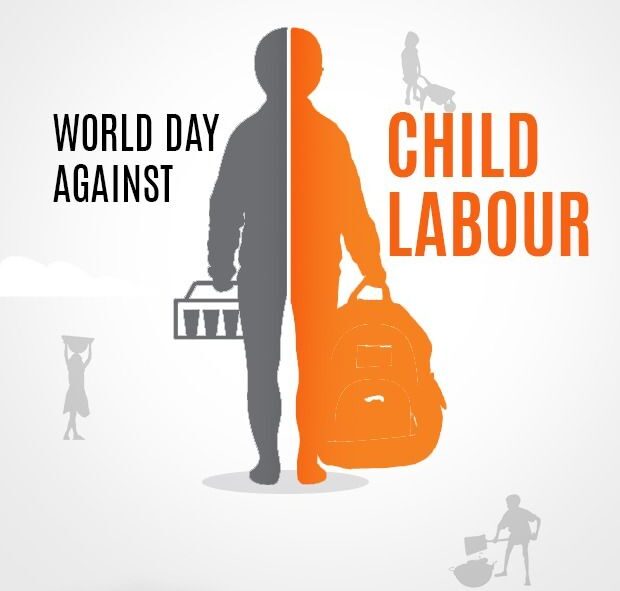World Day Against Child Labor: A Global Effort to End Exploitation
Introduction
World Day Against Child Labor, observed every year on June 12, is a day dedicated to raising awareness about the global issue of child labor. The day was established by the International Labour Organization (ILO) in 2002 to focus attention on the fact that there are millions of children around the world who are still subjected to exploitation through labor instead of enjoying their rights to education, safety, and childhood.
This day calls for urgent action from governments, organizations, and individuals to combat child labor, ensure proper education for children, and ultimately end the cycle of poverty that traps so many families into a life where child labor seems like the only option.
History of World Day Against Child Labor
The International Labour Organization (ILO), established in 1919, has long been working towards promoting decent labor conditions and preventing the exploitation of children. However, it wasn’t until 2002 that the organization dedicated a specific day to focus global attention on the issue.
The observance of World Day Against Child Labor was designed to highlight the challenges that children face when they are forced into work instead of being allowed to go to school and live in safe, supportive environments. It serves to advocate for stronger actions to eradicate child labor and promote policies that protect the rights of children.
Facts About World Day Against Child Labor
- Global Scope: According to the International Labour Organization, there are an estimated 152 million children involved in child labor worldwide. This represents approximately 1 in 10 children globally. These children work in dangerous conditions in industries such as agriculture, manufacturing, mining, and domestic work.
- Worst Forms of Child Labor: Child labor is particularly harmful when children are involved in hazardous work, such as working with toxic chemicals, heavy machinery, or dangerous tools. ILO’s Convention No. 182 defines these as the worst forms of child labor, which include forced labor, trafficking, sexual exploitation, and work in hazardous environments.
- Education is the Key: One of the root causes of child labor is the lack of access to education. Education is crucial in breaking the cycle of poverty and child labor. It empowers children with knowledge, skills, and opportunities for the future. If children are able to go to school instead of working, they are far less likely to be trapped in labor for the rest of their lives.
- Poverty and Inequality: Poverty remains the primary driver of child labor. Families living in extreme poverty may feel they have no choice but to send their children to work to contribute to the household income. However, the wages children earn are often very low, and the work conditions are hazardous, leaving them with little chance of escaping poverty.
- Impact on Health and Development: Child labor has devastating effects on children’s physical and mental health. Children involved in labor often suffer from malnutrition, injuries, and long-term physical disabilities. They also face emotional and psychological harm, including trauma and a lack of proper childhood development.
The Significance of World Day Against Child Labor
- Raising Global Awareness: World Day Against Child Labor plays a significant role in raising awareness about this issue. The day is a call to action, urging governments, businesses, and individuals to take steps to eliminate child labor. Through campaigns, events, and educational programs, people are encouraged to understand the scale of the issue and how they can help.
- Promoting Education: Education is one of the most effective ways to combat child labor. By ensuring that children can access quality education, the cycle of poverty that leads to child labor can be broken. On this day, the importance of education is emphasized, and efforts to increase school enrollment and retention rates are highlighted.
- Advocacy for Stronger Policies: World Day Against Child Labor serves as a platform to advocate for stronger laws and policies that protect children’s rights. Governments are urged to enforce laws prohibiting child labor, and businesses are encouraged to implement ethical labor practices that do not exploit children.
- International Cooperation: Child labor is a global issue that requires collaboration between countries, international organizations, and NGOs. World Day Against Child Labor fosters international cooperation in tackling this issue through sharing best practices, resources, and expertise to combat child labor.
- Empowering Communities: The observance of this day encourages local communities to take action to prevent child labor. By empowering local groups with the knowledge and tools to fight child labor, entire communities can work together to ensure that every child has the opportunity to go to school and grow up safely.
Observance of World Day Against Child Labor
- Public Awareness Campaigns: On June 12, various organizations, including UNICEF, ILO, and other non-governmental organizations, launch campaigns to raise awareness about child labor. These campaigns often involve social media outreach, advertisements, and educational programs to inform the public about the severity of the issue.
- Community Events and Protests: In many countries, people participate in marches, rallies, and protests to demand an end to child labor. These events serve as a way to show solidarity with children around the world and to advocate for stronger protections for their rights.
- Educational Workshops: Schools, community centers, and organizations may host workshops, films, and lectures on child labor. These events serve to educate the public, especially younger generations, about the impacts of child labor and the importance of creating a world where children can grow up safely.
- Policy Advocacy: Governments and international organizations use World Day Against Child Labor to announce new policies, programs, and initiatives to combat child labor. These may include legislative reforms, education programs, and support for families in poverty to ensure that children are not forced into work.
Impact of World Day Against Child Labor
- A Safer Future: Eliminating child labor ensures that children are free to learn, grow, and thrive. It allows them to develop the skills they need to contribute to society as adults in a positive, productive way.
- Stronger Economies: While child labor may seem like an economic solution in the short term, in the long term, it hurts economies by perpetuating poverty. By investing in education and eliminating child labor, societies can develop a more skilled and educated workforce that can drive economic growth.
- Healthier Generations: When children are no longer forced into labor, they can lead healthier lives. Education, good nutrition, and proper healthcare become accessible, leading to a healthier and more productive generation in the future.
- Ending Exploitation: Ending child labor is essential in ensuring that children are not exploited for their labor. By protecting children’s rights, society upholds dignity, respect, and fairness for every individual.
Conclusion: World Day Against Child Labor
World Day Against Child Labor is a vital observance that reminds us all of the ongoing global struggle to eliminate child labor. While significant progress has been made, millions of children are still trapped in labor that deprives them of their basic rights to education, health, and a safe childhood. This day serves as a call to action for governments, businesses, and communities to work together to create a world where no child is forced to work, and every child can enjoy the privileges of childhood and education.
By raising awareness, promoting education, and implementing stronger policies, we can work towards eradicating child labor and ensuring a brighter future for all children.











На данном сайте вы сможете найти последние новости Краснодара.
Здесь размещены актуальные события города, обзоры и оперативная информация.
Будьте в курсе городских новостей и получайте информацию из первых рук.
Если хотите знать, что происходит в Краснодаре, читайте наш сайт регулярно!
https://rftimes.ru/